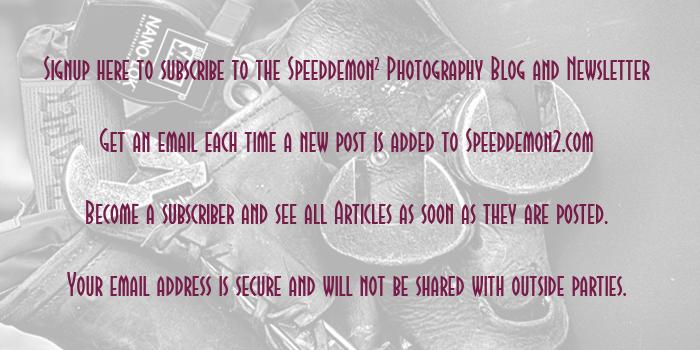
Click on the image above to open it in another window.
Last night I was playing around with some images I shot last week from the Big Four Bridge at sunset. I was intrigued by the patterns that the lights cast on the deck and how they contrasted with the somber sky above. The images were all created from three frame bracket sets of, -2, 0, +2 Exposure Values. The artificial lights on the ramp were set to red and I thought I would experiment with the resulting photos after merging and tone mapping them in NIK HDR Efex Pro 2. For this image I took the HDR image into Aperture 3 and adjusted several sliders in the exposure, enhance and sharpening panels before loading it into OnOne Perfect Effects where I added a vignette. The OnOne suite is another iceberg that I have barely seen the tip of; the range of effects that are available and the ability to combine them in layers within the software leads to an infinite range of looks to explore. Anything you build up in the layers can be exported as a custom preset which you can then apply to similar images and get consistent results.

Click on the image above to open it in another window.
This image is another HDR that I merged in NIK HDR Efex Pro 2. I was pleasantly surprised by how the colors of the red lights combined with the silvery blue of the overhead LED lights to create such an incredible color palette. I kept the anti-ghosting set at 20% which allowed the fast moving clouds to soften and blur as well as keeping the lone runner on the bridge in a state of motion too. I used Photoshop CS5 to do some lens correction and straightening to the image before finishing it with Aperture 3.

Click on the image above to open it in another window.
This image too is a three frame HDR but in this case I stayed within NIK HDR Efex Pro 2 to enhance and play around with the colors before taking it into Aperture 3 where I further altered them with the Vibrance slider. After that I simply sharpened the image and adjusted the horizon using the straighten tool in Aperture 3.

Click on the image above to open it in another window.
This final image is also an HDR with some OnOne adjustments and final finishing in Aperture 3. I’m beginning to discover more and more ways that combining different software from different makers can open more avenues of expression in my photography.
On a similar note there seems to be a price war going on right now between the software makers, NIK has some incredible pricing like their entire Suite for $149.00, you can add in a 15% additional discount if you use the discount code MOATS at checkout. OnOne is having a spring sale at 40% off; you can see what they are offering by clicking on the OnOne Banner in the sidebar on this page. Topaz hasn’t announced anything yet but I suspect they will be joining in on this discount war soon. There is also a link for Topaz in the sidebar. I am an affiliate for OnOne and Topaz so clicking on the banners allows me to earn a small commission should you decide to order anything.
One more plug here is for my good friends at Outdoor Photo Gear whose banner is also in the sidebar. These guys and gals are the friendliest and most knowledgable photo gear suppliers I have ever done business with. They run specials all the time and I would recommend you take a look at their site too.

Wonderful pictures.
Thank you rabirius.
I love the different lighting effects, nicely done!
Thanks Theresa
Nice work, Nick; it is an art in itself to make you good photo’s even better. Combining different software package is something your excelling at.
Thanks Bob, I do like experimenting and trying out new software. It really is a “digital darkroom” experience almost as fascinating as when I used to see an image coming to life in the developer tray. Last night I was trying out another HDR program that I found on the web. I’ll probably be posting about it soon; I’d show something I did with it but while it’s in trial mode it places watermarks on the images which I find very annoying. I think that doing that is overkill from the software developer.
Nick –
The image on top is striking! I too have experimented with software combinations for effect and have settled on Lightroom and Photomatix.
http://www.flickr.com/photos/73877479@N00/8288620225/lightbox/
http://www.flickr.com/photos/73877479@N00/8349881187/in/photostream/lightbox/
Cheers!
Greg
Thanks for you comment Greg. I went to your link and I have to say you are getting better results than I am with Photomatix. I’ve dabbled with it but haven’t really gotten past it’s rather difficult interface. For me it’s not nearly as intuitive as NIK Hdr Efex Pro 2 but your images show that it can be used to produce some great photos. Thanks for sharing.
#1 is a definite, “WOW!” I love editing, there is something soothing about playing and creating another dimension to a image with the various software programs. I liken it to a painter with canvas.
I agree Phyllis, back in the days when I used film I truly loved the darkroom. Now it’s possible to be in the Digital Darkroom whenever I want: I don’t have to mix chemicals or rush to use them before they go bad either. I know many photographer long for the old days but I sometimes think they long for those times because they can’t make the switch from chemistry to digital processing. Too often they strike me as people who won’t accept that it isn’t the process it’s the photograph that matters most.